#underground (1976)
Text
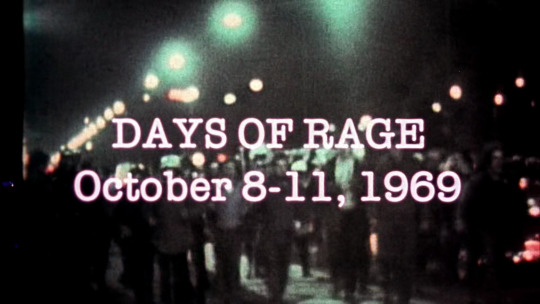
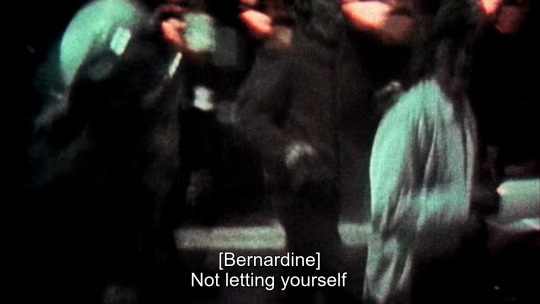
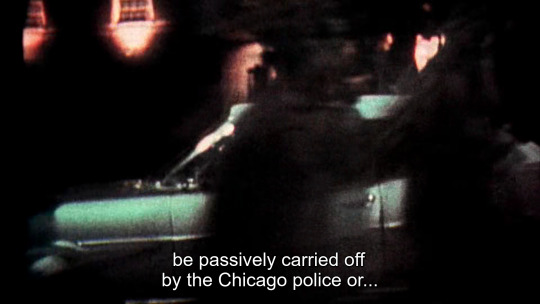
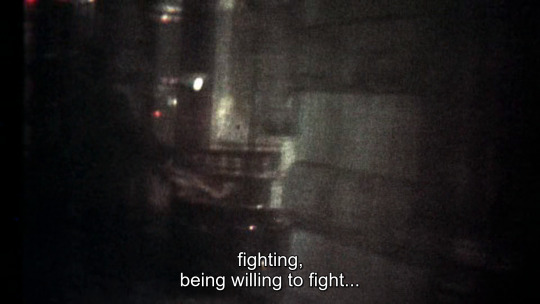
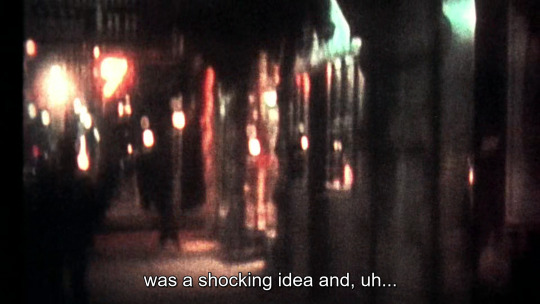


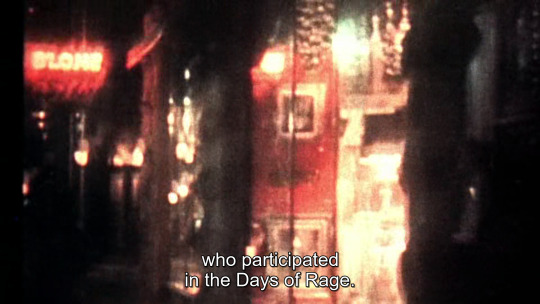
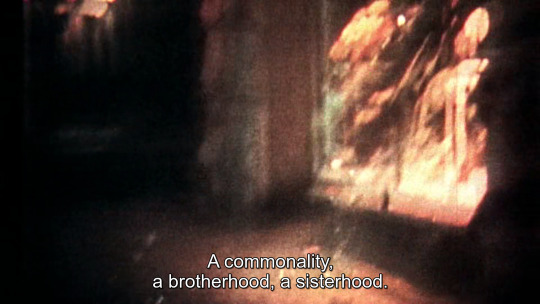
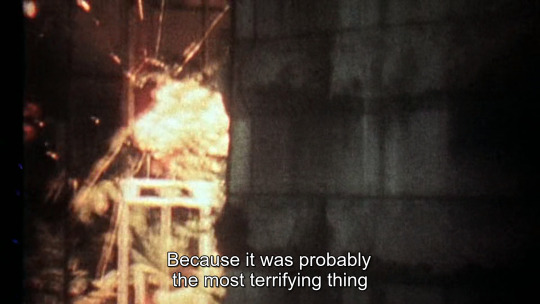
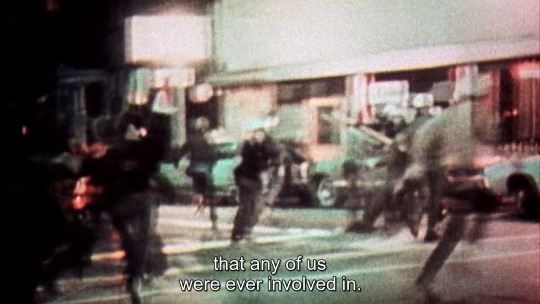
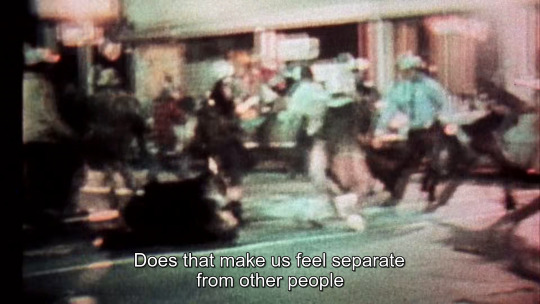

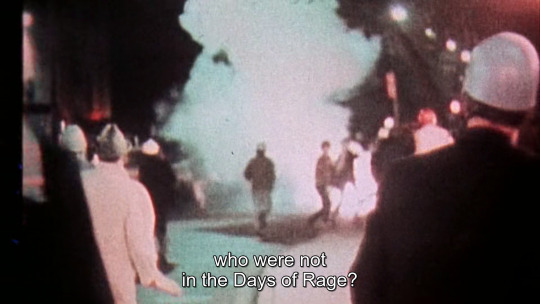
Underground (Emile de Antonio, Mary Lampson & Haskell Wexler, 1976).
#weather underground organization#underground (1976)#underground#emile de antonio#mary lampson#haskell wexler#weathermen#the weathermen
51 notes
·
View notes
Text

I feel like Linder would be so fuckin delighted if I mailed her a copy of vampire Johnny
#Also can we talk about how badly I want this 70 year old woman to stomp on me#And can we also talk about how fantastic it is that she has an Instagram#And like she's just never stopped#From 1976 to now#She's constantly creating new things trying new things pushing new boundaries#She has seventeen things going on at any given time#She's still totally underground still totally out of the mainstream#She's raised an incredibly cool kid#She's just unbelievable#I'm so in love with her#I don't understand how she gets so little recognition#Like Linder just woke up one day and decided to be a sexually empowered feminist with revolutionary ideas#And then kept doing that for 70 years#While being outrageously beautiful
3 notes
·
View notes
Text

Rag photographer Alan Pogue by Bonnie Jewel Froman - 1976.
35 notes
·
View notes
Text
#assault on precinct 13 1976#assault on precinct thirteen#assault on precinct 13#austin stoker#john carpenter#siege film#splatter film#exploitation film#tcm underground#1970s movies#exploitation films#exploitation cinema#grindhouse movie#grindhouse film#grindhouse#movie art#art#drawing#movie history#pop art#modern art#pop surrealism#cult movies#portrait#cult film
3 notes
·
View notes
Text
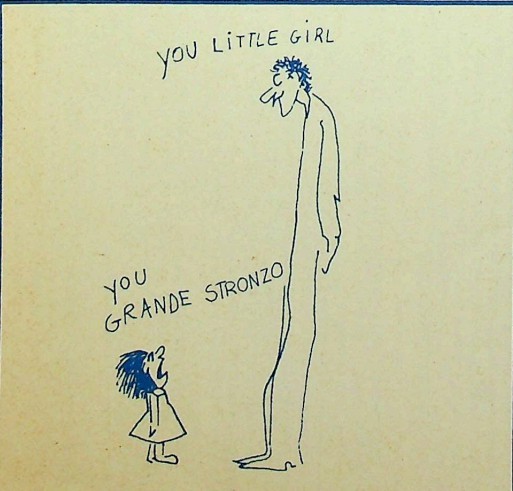
Da limenetimena, n. 1, 1976.
4 notes
·
View notes
Text
The origins of The Game are uncertain. The most common hypothesis as is that The Game derives from another mental game, Finchley Central. While the original version of Finchley Central involves taking turns to name stations, in 1976 some members of the Cambridge University Science Fiction Society (CUSFS) developed a variant where the first person to think of the titular station loses. The game in this form demonstrates ironic processing, in which attempts to suppress or avoid certain thoughts make those thoughts more common or persistent than they would be at random.
How this became simplified into The Game is unknown; one hypothesis is that once it spread outside the Greater London area, among people who are less familiar with London stations, it morphed into its self-referential form. The creators of "LoseTheGame.net", a website which aims to catalogue information relating to the phenomenon, have received messages from multiple former members of the CUSFS commenting on the similarity between the Finchley Central variant and the modern Game. The first known reference to The Game is a blog post from 2002 – the author states that they "found out about it online about 6 months ago".
Finchley Central is a mind game in which two players take turns naming stations in the London Underground. The first person to name Finchley Central is the winner. Of course, the first player could say "Finchley Central" straight away, but as mathematics professor Jonathan Partington notes,
An opening move of "Finchley Central" is too much of a cheat, and you might wish to start with, say, Liverpool Street, when, assuming that your opponent isn't rude enough to reply with Finchley Central, leaves you with a mate on your second move (though you probably would prefer to stall by playing, say, Bank, in the hopes of a more spectacular win later).
It is clear that the ‘best’ time to say Finchley Central is exactly before your opponent does. Failing that it is good that he should be considering it. You could, of course, say ‘Finchley Central’ on your second turn. In that case, your opponent puffs on his cigarette and says, ‘Well… Shame on you.’
I think the American mind cannot comprehend the nature of finchley central
2K notes
·
View notes
Text
Punk History Resources: Vol. 1
This is a compilation of resources found and recommended by various alternative bloggers, each of whom are credited for their contributions. This started because I was getting SO MANY asks about resources such as videos, books, and websites to use to learn about punk history. Admittedly, my own list isn't that long, so I thought it was best to reach out to some others and share their knowledge with everyone. So thank you again to everyone who helped out with this!!
@raggedyfink @lovintheaesthetic @punk-patches @my-chemical-ratz
YOUTUBE:
Punk/Goth Docs Playlist on Youtube (77 Videos) (raggedyfink)
1991 The Year Punk broke (lovintheaesthetic)
She's Real (Worse Than Queer) (lovintheaesthetic)
Don't Need You, The Herstory of Riot Grrrl (lovintheaesthetic)
The Long Queer History of Punk (lovintheaesthetic)
The very Black History of Punk Music (lovintheaesthetic)
Punk's Not Dead (lovintheaesthetic)
BOOKS:
Phantoms the Rise of La Deathrock (raggedyfink)
Too Tough to Love by Roxy Ramone (raggedyfink)
I Slept With Joey Ramone by Mickey Leigh (raggedyfink)
Please Kill Me, The Uncensored Oral History of Punk Rock (punk-patches & lovintheaesthetic)
Encyclopedia of Punk (punk-patches)
The Day the Country Died: A History of Anarcho-Punk, 1980-1984 (my-chemical-ratz)
The Heebie-Jeebies at CBGB's: A Secret History of Jewish Punk (my-chemical-ratz)
Sellout: The Major-Label Feeding Frenzy That Swept Punk, Emo, and Hardcore (lovintheaesthetic & my-chemical-ratz)
Tranny: Confessions of Punk Rock's Most Infamous Anarchist Sellout (my-chemical-ratz)
Punk Rock: An Oral History (my-chemical-ratz)
Girls to the Front: The True Story of the Riot Grrrl Revolution (my-chemical-ratz)
Queercore: Queer Punk Media Subculture (my-chemical-ratz)
Queercore: How to Punk a Revolution: An Oral History (my-chemical-ratz)
Spider-Punk: Banned in D.C.(this doesnt have anything to do with history but i love spider punk so) (my-chemical-ratz)
MOVIES / DOCUMENTARIES:
The Punk Singer (punk-patches)
Queercore: How to Punk a Revolution (punk-patches)
Punk's Not Dead (punk-patches)
Pansy Division: Life in a Gay Rock Band (punk-patches)
Queercore: How To Punk a Revolution (my-chemical-ratz)
Afropunk (my-chemical-ratz)
Punk in Africa (my-chemical-ratz)
A Band Called Death (my-chemical-ratz)) (link courtesy of @wrench-p, but is unavailable to watch in the US))
ARTICLES:
(some of these are found on JSTOR, but you can sign up for a free 100 articles per month)
Muslim Punk in an Alt-Right Era (my-chemical-ratz)
A History of Punk (my-chemical-ratz)
Jews, Punk and the Holocaust: From the Velvet Underground to the Ramones: The Jewish-American Story (my-chemical-ratz)
What is Punk and Why Did It Scare People So Much? (my-chemical-ratz)
An Account of a South African Punk Rock Music Collection (my-chemical-ratz)
Queer As Punk: A Guide To LGBTQIA+ Punk (my-chemical-ratz)
Did Punk Matter?: Analyzing the Practices of a Youth Subculture During the 1980s (my-chemical-ratz)
ZINES:
(some may not be *about* history, but they’re a huge part of it!)
Punk Planet archive (my-chemical-ratz & safety-pin-punk)
Queer Zine archive (I personally like the anon boy collection haha) (my-chemical-ratz)
Archive.org in general has a lot of zines :) (my-chemical-ratz)
ETC:
(These aren’t about punk history itself but could be helpful in learning about the politics that go with being punk)
A History of Punk from 1976-78: A Free Online Course from the University of Reading (safety-pin-punk)
Punk History Reading List (safety-pin-punk)
Essays about socialism (my-chemical-ratz)
Leftism 101 (my-chemical-ratz)
Rights as an American protester (my-chemical-ratz)
Social justice classes (I’m really excited to go through these!!) (my-chemical-ratz)
Stamped (my-chemical-ratz)
How To Be An Anti-Racist (my-chemical-ratz)
Nice Racism: How Progressive White People Perpetuate Racial Harm (my-chemical-ratz)
I would love to make a Vol. 2 post at some point in the future, so if you have resources and want to share, PLEASE message me!!
#punk 101#punk culture#punk history#punk#punx#punk resources#resource list#friends!!!#making this post legit made tumblr crash on my desktop soo uhhhh let me know if anything is fucked up please!
1K notes
·
View notes
Photo


The Scooby Doo Show
S01E10 - A Frightened Hound Meets Demons Underground (1976)
Hanna Barbera Productions
#the scooby doo show#daphne blake#shaggy rogers#scooby doo#a frightened hound meets demons underground#hanna barbera
157 notes
·
View notes
Text

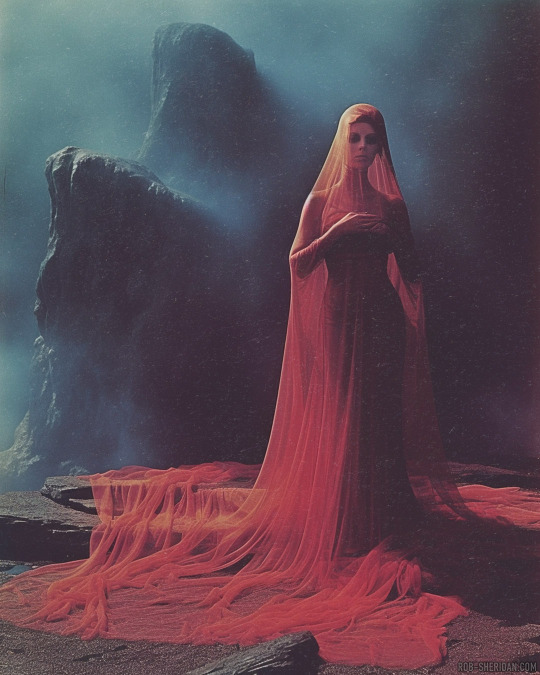
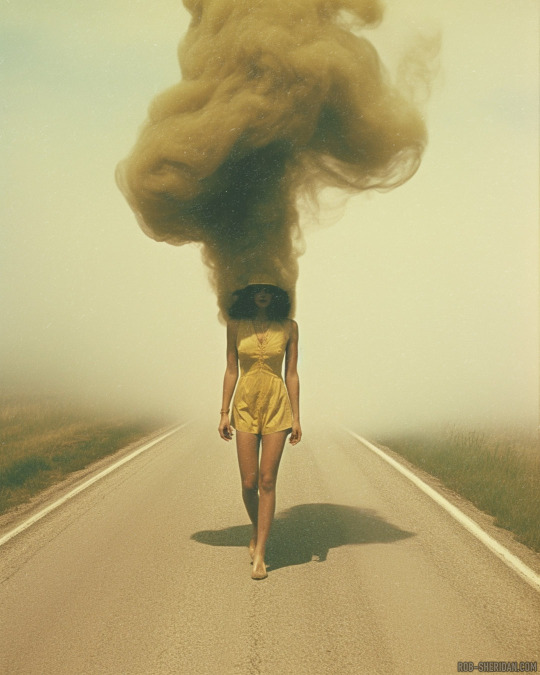

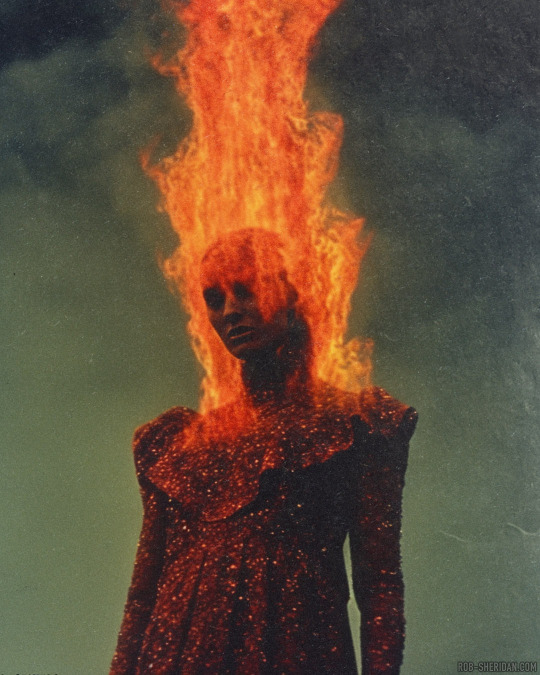
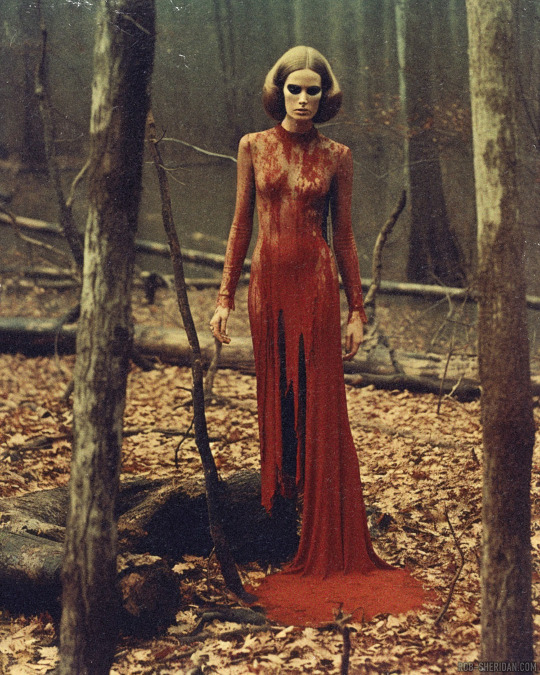


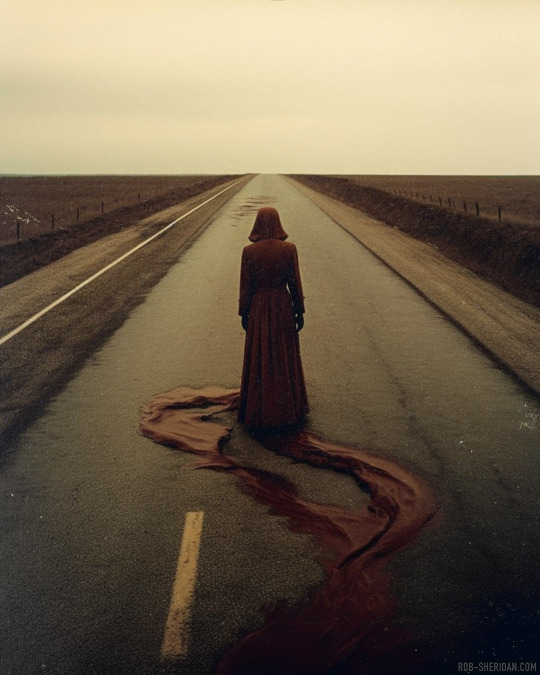
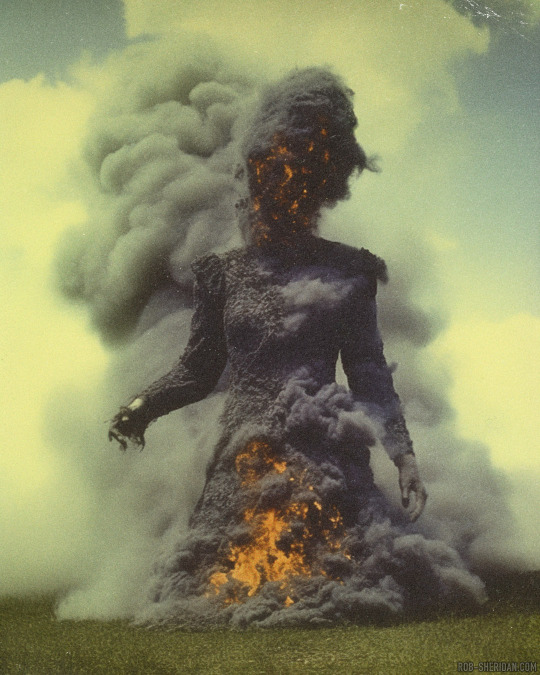
From the pages of SPECTAGORIA magazine issue 6, 1974. Spectagoria was a renowned underground fashion photography magazine surrounded by rumor and mystery. Founded by iconoclastic photographer/filmmaker Sera Clairmont initially as a showcase of her own work, the publication drew controversy for its dark themes and morbid imagery, which often used beauty, sexuality, and fashion as a means to, in Clairmont’s words, “let speak the darkness that surrounds us from other worlds.”
Christian groups in the United States called for a ban of the magazine, with Jerry Falwell accusing Clairmont of being “a witch and a pornographer in league with the devil himself.” Clairmont dismissed the accusations as “just more blatant examples of the sexism and double-standards that led me to forge my own path in a male-dominated industry.” But the boycott drew scrutiny to the magazine’s photographs, which at times contained images that seemed impossible, even supernatural, in nature. Some wondered if Sera Clairmont was related to Seraphina Clairmont, the famous Manhattan mystic who “spoke to demons” and lived at the mysterious Zorovic Building at the turn of the 20th century, and was rumored to have been buried alive in the building’s 1913 destruction.
Sera Clairmont went into hiding in 1976, but continued to publish Spectagoria until the early 80s, growing stranger and darker with each issue, fueling even more speculation that otherworldly powers were behind it before its abrupt end. No one knew where it was being published from, nor where - or *how* - its photos were taken. Very few copies of each issue of Spectagoria were printed, and today only a handful of scattered pages have been located and scanned. I will continue to share more pages as I find them...
-----------
NOTE: This is a work of fiction created by me. This alternate reality horror story is part of my NightmAIres narrative art series (visit that link for a lot more). NightmAIres are windows into other worlds and interconnected alternate histories, conceived/written by me and visualized with synthography and Photoshop.
If you enjoy my work, consider supporting me on Patreon for frequent exclusive hi-res wallpaper packs, behind-the-scenes features, downloads, events, contests, and an awesome fan community. Direct fan support is what keeps me going as an independent creator, and it means the world to me.
#rob sheridan#synthography#ai art#ai horror#ai fashion#synthography horror#horror art#ai photography#70s horror#cult horror#alternate history#horror stories#writing#spectagoria#sera clairmont
806 notes
·
View notes
Text
What we know about Goncharov’s mysterious director, Matteo JWHJ 0715 and his tragic, yet fascinating life.

He was born as Matteo Di Sciocchezze to a poor catholic farming family on November 5th, 1938, in Torre del Greco, just outside of Naples, during the fascist Mussolini regime.
It is rumored that the Sciocchezzes were heavily indebted to the Russian-Italian Chmerkovskiy crime family, after they bought a surplus of inventory from Matteo’s father’s cheese-making business when they weren’t able to sell off the excess supply.
His older brother Macareo was killed by German Nazis during WW2, causing him to have an intense hatred of Nazism and fascism, which would later be themes in his work.
Self-identified as bisexual in his teens but was shunned by his family. He would later join Fuori!, or “Out!”, the first homosexual organization in Italy, in 1972, soon after its founding after being attracted to its initial Marxist ideals. It was one of the first associations of the Italian homosexual liberation movement.
Matteo was briefly married to actress Rita Lozionne and had one son with her, Bruno Lozionne, in 1970, but the separated soon after she gave birth.
Sophia Loren mentioned in a 1984 Variety article that she had been “madly in love with Matteo” at one point during their relationship in the early 1960s but had to end their relationship because of the “incident in Prague.” She would not go into further detail.
Changed his last name to his license plate number, rejecting his homophobic family and becoming disillusioned with the idea of nationalistic self-identity.
Knew John Waters and helped fund some of his earlier films.
Aside from Goncharov, the only other surviving work in his filmography, most which was tragically lost in a studio fire in Milan in 1987, were the underground early 60s short films “Tales of the Dog,” a 4 part series, and his 90 minute 1968 film “Green Candles.” These works are incomplete and partially damaged due to the fire.
Matteo had been in a gay love affair with the married producer Domenico Procacci (pictured below from a still one of Matteo’s “Tales of the Dog” films) during the production of Goncharov. Procacci admitted to this years later in 1998, and that they had been planning to leave for San Francisco before his untimely death.
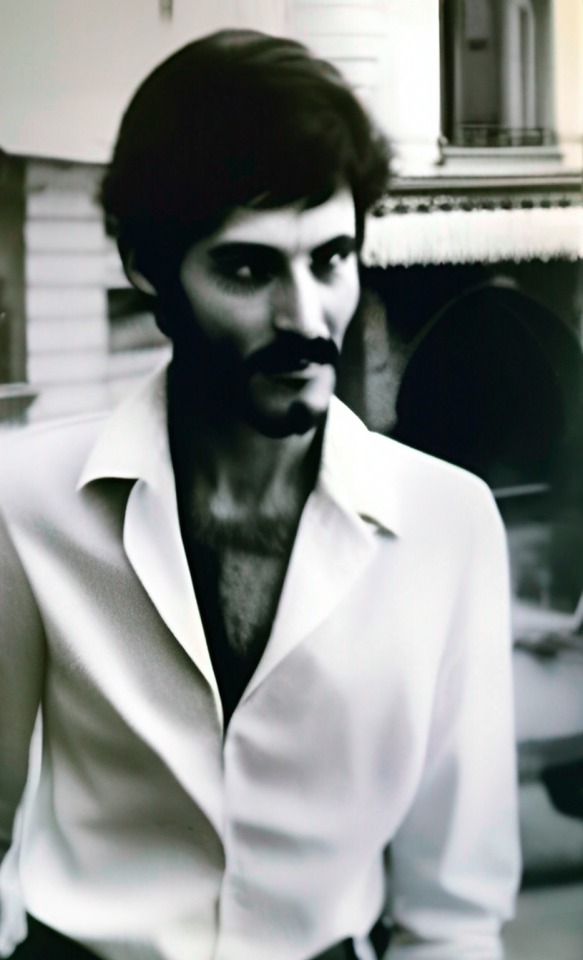
Matteo died tragically in 1974, however, after falling backwards out of a window, supposedly while playing the mandolin (his favorite past time), as sources claimed.
His son Bruno Lozionne emigrated with his mother in 1976 to the United States, and is currently living in Carbondale, IL, working as the senior office manager of Hardison Supply Co.
If anyone can send in more information on Matteo please feel free to add to this post.
#also I can’t get over how gorgeous this man was#goncharov (1973)#goncharov#andrey daddano#ice pick joe#katya goncharov#mario ambrosini#martin scorsese#Matteo JWHJ 0715
3K notes
·
View notes
Text


Well, this one got me. Looks like a normal 1976 Mid-century modern in South Range, WI. The back reminds me of a motel, but it does have a whopping 9bds, 4ba, so it's a large home. $1.1M.


But, that was just the front & back. The entire middle of the house is underground. The Realtor Description says: Structure Type: Earth Home & Characteristics (Muck (?), Undeveloped, Elevation-Low, etc.) MUCK? That doesn't sound good. We must see the interior.

The entrance. Wait a minute, this is a hotel- the doors have numbers. WTF? The description says "built by preppers for preppers," and "many features 'just in case.'" Oh, like whoever, or whatever, can't come thru the glass front.

This house really took me by surprise. It looks like a commune, but each floor has its own living setup, and is supposed to be like a 3 family home.


So, this is unit #1's kitchen. Typical MCM style.

The bedrooms don't have separate baths. So, it's 1 bath per unit.


This floor has a sauna & shower room.

Huge living room. Like the Zombie Apocalypse couldn't just open the sliding doors.

Kitchen in the lower level, which is unit 2.

The bath.

One of the bedrooms. They're pretty roomy and each one has a different configuration.

Living room in the back of the house for unit 2.


Unit 3 kitchen.

I was wondering what this is, is it some sort of bunker?

Unit 3 is in the basement level. By the look of the various welcome mats, all of these rooms are occupied separately.

Game room.

2 sets of washers & dryers.

What, no giant cans of food? This is really just a boarding house.

The power room. Just one water heater for 9 bedrooms? Heat is a combination of wood & propane.

Large patio.

8 car garage. The tower in the background is an old wind generator.

This was a generator house that's now empty.

Shooting range to practice shooting the intruders.

80 acres of land- so the property is huge.
https://www.trulia.com/home/5312-s-stone-rd-south-range-wi-54874-79382055
110 notes
·
View notes
Text


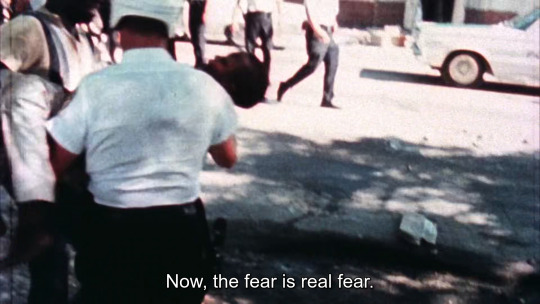
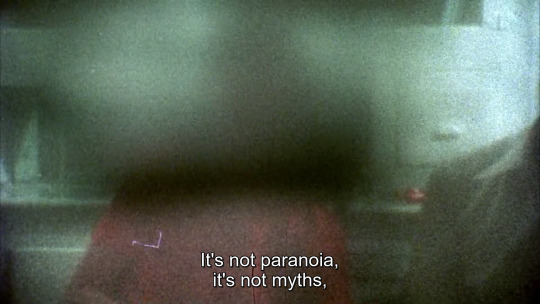

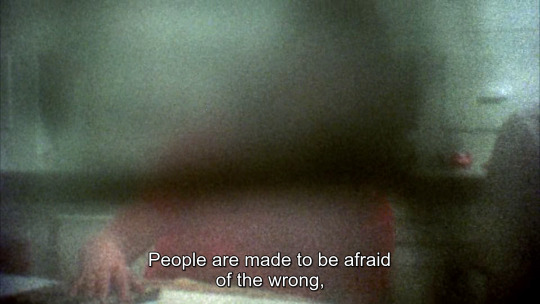

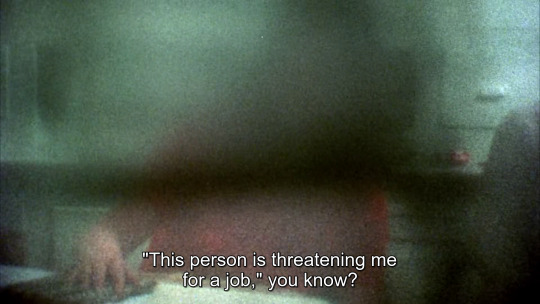



Underground (Emile de Antonio, Mary Lampson & Haskell Wexler, 1976).
16 notes
·
View notes
Text
shido's conspiracy is big: koenkai (supporters associations) in japanese politics
How do you take over Japan, if you're a corrupt piece of shit?
On 11/25, when the Shido's Palace mission starts and you're finally released from captivity in Leblanc, the Modest Housewife in the Shibuya underground mall suddenly becomes the Not-So-Modest Housewife. And what does she tell us?

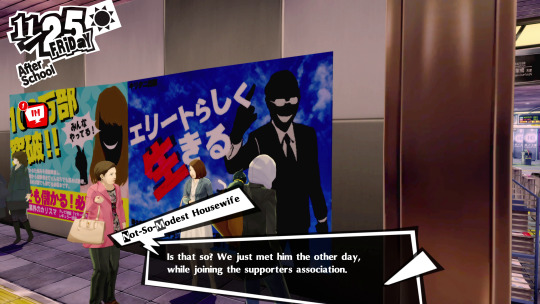
shido has a what now
What's the "supporters association"? In Japanese, it's a 後援会 kouenkai. From Wikipedia:
Koenkai (後援会, lit. "local support groups") are an invaluable tool of Japanese Diet members, especially of the Liberal Democratic Party (LDP). (note: in P5, this is the "Liberal Co-Prosperity Party" or LCP, Shido's original party and the original ruling party.) These groups serve as pipelines through which funds and other support are conveyed to legislators and through which the legislators can distribute favors to constituents in return.
The article is fascinating; do give it a read, as I can't possibly do it justice here. These are massive organisations, and relay vast amounts of cash to their members. They organise endless activities for their members—that meeting at the Wilton Hotel on 5/5 is one. They often require a personal connection to be invited, which is why the Housewife says this to her friend:

... she knows she wasn't invited.
Though koenkai are weaker in modern times, there are many examples of them being involved with corruption; here are a couple.
"The Asahi reported in the mid-1970s that the [koenkai of former Prime Minister Tanaka Kakuei] "virtually controls… agricultural committees, popular welfare committees, election management committees". This thorough penetration of Tanaka's koenkai into all important facets of Niigata's people's lives propelled him into becoming the father figure of the district. After his arrest in 1976 on corruption charges, many of Niigata's residents still expressed deep respect towards him."
"Due to the huge support [former Prime Minister] Takeshita Noboru enjoyed as a result of his koenkai, his electoral district in Shimane came to be known as ‘Takeshita Kingdom'. Despite being embroiled in many political scandals, related to insider trading and corruption (for which he was never charged), Takeshita's immense local support never waned."
so what does this tell us
In short, Shido's conspiracy is not a few corrupt high-level officials. It's not just Shido, Akechi, the SIU Director and those people on the ship. It is a vast organisation.
It recruits people by reputation (remember those five recommendations in the Palace?) from all levels of society—and those recruits then operate as a bloc, networking, doing favours for each other, advancing their mutual interests, connected via a hierarchy to Shido at the top. This is why Shido can control everything.
It also explains why everyone seems to be linked to the conspiracy—including the hapless Principal Kobayakawa. Did you think it was unrealistic for him to be involved? It seems likely that he was just a low-level member of Shido's koenkai.
When Shido needed someone at Shujin to investigate the Phantom Thieves, Kobayakawa was there—because they have people everywhere. A quick phone call from a higher-up in the organisation—the SIU Director, most likely, who we know Kobayakawa speaks to—and he's eating out of Shido's hand. And will do anything he wants....
So Kobayakawa wasn't anybody at all. He wasn't important. He wasn't somehow part of the deep state. He was just one of likely hundreds of thousands of paid-up Shido supporters looking to advance themselves, getting the vote out, and funding the cause.
He was in the right place at the right time. After all, the koenkai got Kobayakawa his job at Shujin. All his hopes for advancement are centred on it:
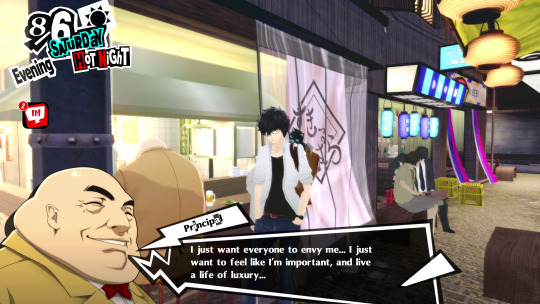
Because just like the two housewives in the underground mall, and probably like everyone else in the koenkai, Kobayakawa is a desperate social climber, impressed by wealth and fame and power and flashy titles.
I hope he thought it was worth it.
revision history
Click here for the latest version.
v1.0 (2023/10/31)—first posted.
217 notes
·
View notes
Text
The Bat Family Timeline and Ages (Post-Crisis and New Earth) with Sources
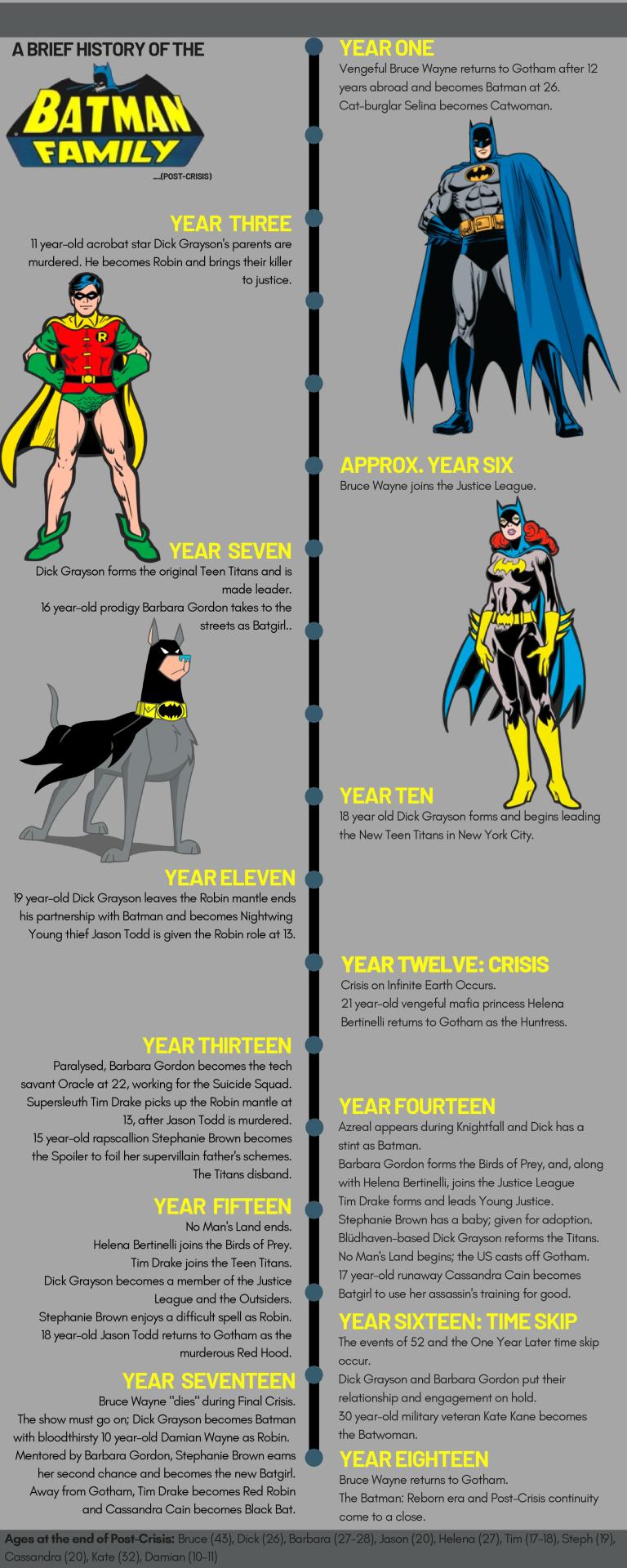
Evidence
In Batman: Year One, Bruce is said to be 25 in the January he returns to Gotham. The 1976 DC Calendar puts Bruce's birthday on the 19th of February so Bruce is 26 during his first outing as Batman in April.
Marv Wolfman's Batman: Year Three (Batman vol. 1 #436) tells us that Dick Grayson's parents die in Bruce's third year. In Batman vol. 1 #441 (also by Wolfman) Tim says that Robin started appearing around 6 months after the death of the Flying Graysons. For Dick's age when he becomes Robin, see below.
Bruce joins the Justice League before Dick forms the Teen Titans. Both these teams form before Barbara Gordon becomes Batgirl at 16 (Batgirl: Year One).
Barbara and Dick are each other's dates to their high school prom and so are less than 2 years apart in age (Detective Comics vol. 1 #871).
I suspect Dick, who was an emancipated minor, graduated high school and started college a year early, which allows Dick and Barbara to have some time as the new Dynamic Duo, as we see in Batman Family.
Dick Grayson is 18 when he forms the New Teen Titans, all of whom are also teenagers (Nightwing vol. 2 #137 by Wolfman, who also created the New Teen Titans).
Dick Grayson is 19 when he becomes Nightwing (Batman vol. 1 # 416).
21 year-old Helena becomes Huntress (Huntress: Year One #1), and interacts with Batgirl, meaning that Barbara is not yet Oracle.
Jason dies at 15, 4 months before his 16th birthday (Batman Files). This is before the New Teen Titans' third year anniversary (New Titans #71), before any of the Titans turn 22 (Deathstroke vol. 1 Annual 1), 2 years after Dick becomes Nightwing and almost 10 years before Dick's parents are killed (Batman vol. 1 #436). Dick is hence 21 during these events and 11 when he became Robin.
I also kinda like Dick being 17 years younger than Bruce because that's also the age difference between Adam West and Burt Ward from the 60s TV series.
After these events, Tim Drake becomes Robin and is 13-14 (Batman vol. 1 #441 and Robin II #1)
Soon after, Stephanie Brown is 15 when she becomes Spoiler (Secret Origins 80-Page Giant).
Stephanie is still 15 when she realises that she is pregnant (Robin vol. 2 #59) and Tim is almost 15 during this time (Secret Origins 80-Page Giant).
Cassandra Cain is 17 when she comes to Gotham during this time (Batgirl vol. 1 #1), during No Man's Land which lasts one year.
Helena’s family were killed when she was 8 and during Batman/Huntress: Cry For Blood, Tim says the murders happened roughly 15 years ago, making her roughly 23 during this storyline.
Cass turns 18 in January (Batgirl vol. 1 #39), Tim Drake turns 16 (Robin vol. 2 #116), Jason would have turned 18 in August (Detective Comics vol. 1 #790), and Stephanie is 16 when she "dies" (Batman Allies Secret Files & Origin).
Personally I'd re-arrange Tim's 16th birthday to be the last of these events four events to accommodate him still being 17 late into the Batman: Reborn, see below.
Jason soon returns to Gotham as Red Hood, not long before Infinite Crisis, 52 and One Year Later.
Following the one year time skip, Dick says it's been almost 10 years since his misadventures with Metal Eddie and Liu as a 16-17 year old (Nightwing vol. 2 #133 by Wolfman), which makes sense because he would be 25 by my math.
Stephanie returns from her time as a medical volunteer in East Africa, finishes high school and begins university during Batman: Reborn. She'd turn 19 by the end of this year by my math, which is a typical age to be begin attending university (Gotham Underground and Batgirl vol. 3 #1).
Dick calls Damian Wayne a "10 year-old" before Stephanie attends university (Batman and Robin vol. 1 #2) and Steph still calls Damian a "10 year-old" while she's in her second semester (Batgirl vol. 3 #13 and Batgirl vol. 3 #17). He might have turned 11 before the reboot.
Batwoman: Elegy (Detective Comics #858), during the Batman: Reborn year, shows that Kate was 12 when she was kidnapped and saw her mother and sister killed. This incident is also said to happen "20 years ago”, making her 32 and hence 30-31 during her first appearance in 52/One Year Later.
Tim Drake is still 17 while Steph is in her second semester of her first year at university, and it's stated that he is meant to be in his senior year at high school (Batgirl vol. 3 #13, Red Robin #17 and Red Robin #25). It's possible he turns 18 before the reboot.
Mistakes I Made
Cassandra Cain is 21 in Year Eighteen.
The "Titans disbands" in Year Thirteen was definitely a year early but it's done.
#batman#batman and robin#robin#batgirl#nightwing#spoiler#batwoman#red robin#red hood#black bat#batfam#bat family#timeline#bruce wayne#dick grayson#barbara gordon#tim drake#stephanie brown#cassandra cain#helena bertinelli#kate kane#damian wayne#jason todd#dc comics
479 notes
·
View notes
Text
On March 12, 1997, Assault on Precinct 13 was released on Laserdisc in the United States.

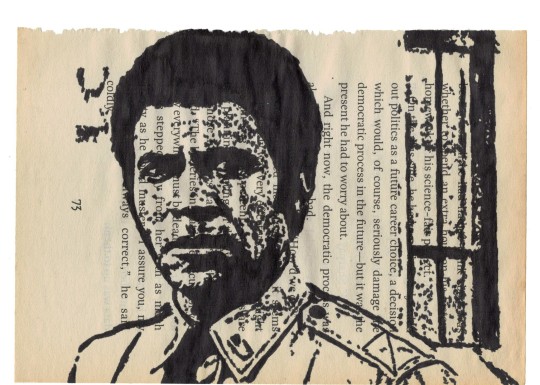
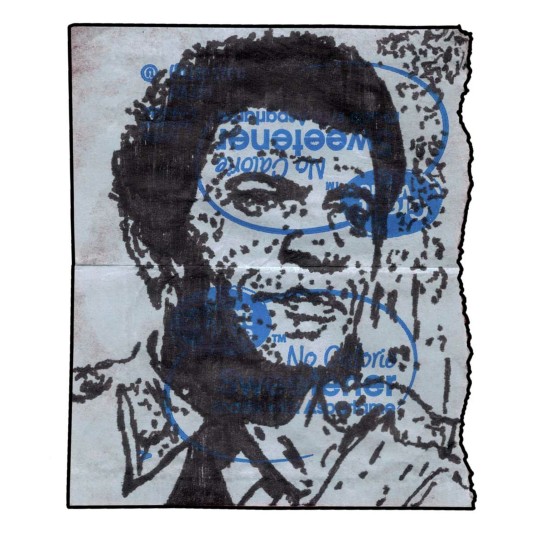
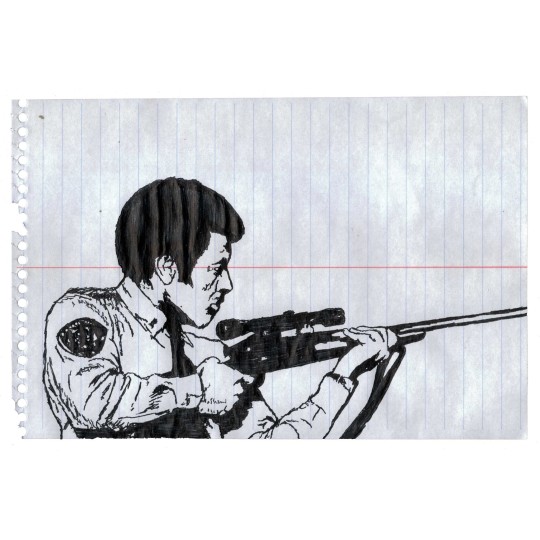
#assault on precinct thirteen#assault on precinct 13#assault on precinct 13 1976#john carpenter#austin stoker#laserdisc#siege film#home media#action thriller#action movies#action film#neonoir movies#neonoir#neonoir thriller#neonoir film#exploitation films#grindhouse movies#movie art#art#drawing#movie history#pop art#modern art#pop surrealism#cult movies#portrait#cult film#tcm underground
2 notes
·
View notes
Text
How Post-Punk Influenced Nowadays Fashion
It's been a long time since Malcolm McLaren opened his boutique "Sex" in the 1970s, and Vivienne Westwood equipped the Sex Pistols with their iconic outfits and sent them out onto King's Road. The approach back then was: "Being anti at all costs, against the establishment." Eventually, it turned into "Do It Yourself." It was fashionable because it tried not to be fashionable.
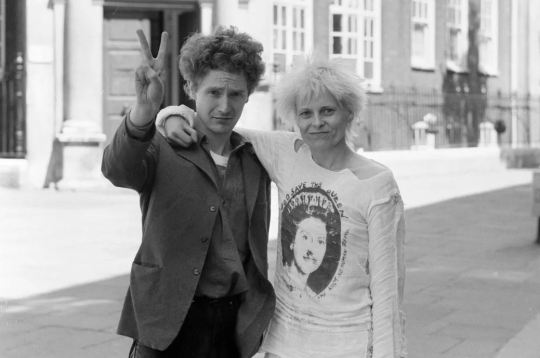
A few years later, members of Joy Division met at a Sex Pistols show in 1976 and started as a punk band. However, it soon evolved into something entirely different. When you listen to old Joy Division songs like "Warsaw" you can clearly hear the punk rock influences, but the band quickly started to deviate from the common motifs of the genre.

The music slowed down. The noisy guitar sound of punk was subdued to appear more intriguing, and Ian Curtis's existentialist lyrics, influenced by authors like Fyodor Dostoevsky, Jean-Paul Sartre, and Franz Kafka, focused not on chaos, rebellion, and hedonism but reflected his fears, physical sufferings, and the absurdity in the face of the zeitgeist and social influences of the 1970s and 1980s, marked by changes and political uncertainty, forced Joy Division to experiment.
They created not only something musically unique but also something aesthetic. For example, with their monochromatic designs on their album covers for "Unknown Pleasures," which is probably the third best-selling T-shirt in fast fashion stores, alongside Nirvana and the Ramones T-shirts. Joy Division ended in 1980 after Ian Curtis hung himself in his kitchen. They not only helped shape the sub-genre "Post-Punk" but were also the unofficial soundtrack of existentialism. The soundtrack that made Joy Division's music feel so genuine. Because it was genuine.
Of course, in the 1960s, there were artists who processed existential themes in their lyrics. A good example would be Lou Reed of The Velvet Underground, who, heavily influenced by literature, dealt with many serious topics in his lyrics. However, it wasn't just their music; it was also their appearance that defined Joy Division. On stage, in promo pictures, and in interviews.
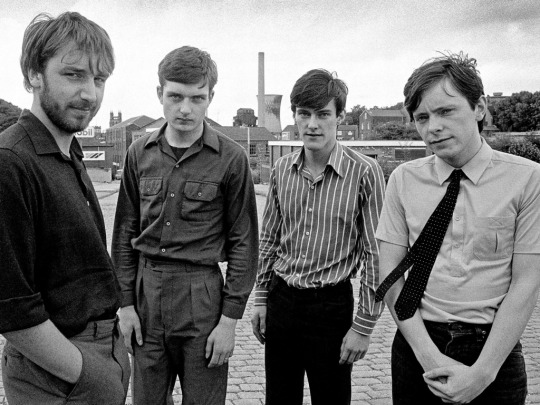
Ill-fitting shirts from army surplus stores, old man's pants, a few pair of derbies, big raincoats. Everything that was atypical for the punk movement, and many other artists, including The Cure, The Smiths, Siouxsie Sioux and the Banshees, Bauhaus, Alien Sex Friend or Sisters Of Mercy, went in the same direction: Through a dark, introspective, sometimes minimalist, but avant-garde aesthetic, they set themselves apart from punk and society, and looking at bands from the Post-Punk Revival from the 2000s like Interpol, Iceage, Molchat Doma, Boy Harsher, or Cold Cave, it quickly becomes apparent that this aesthetic has proven itself for almost 50 years.

This trend was, of course, not only an inspiration for musicians but also for artists, fashion designers, architects, and many more.
One designer that immediately comes to mind is Antwerp-Six member Ann Demeulemeester from Belgium, whose influences clearly evoke artists like Siouxsie Sioux or Patti Smith but also the playful goth look of the 1980s era by Rei Kawakubo (Comme Des Garcons) or Japan's goth father himself: Yohji Yamamoto.
Her story begins in Antwerp, where she initially studied at the Royal Academy of Fine Arts and quickly got to know the other Antwerp-Six members. She and the Antwerp Six presented their collections at Fashion Week and quickly became highly esteemed designers, now considered among the greatest designers of all time. Many of Ann's collections featured songs by Patti Smith, Nick Cave and the Bad Seeds, or The Velvet Underground.
This alone shows the influence of Post-Punk on Ann Demeulemeester's designs. Her asymmetrical cuts and draperies, her monochromatic, Kawakubo and Yamamoto-inspired, mainly black designs were groundbreaking, bringing avant-garde ideas in a consumable form to the people.

Another noteworthy designer from Antwerp is Raf Simons and his collections. Raf Simons grew up in the 1980s and was deeply rooted in the punk and goth subculture, whose influence can be traced in many of his collections or directly referenced by Raf himself. Notable are his A/W96 collection, which includes all-black looks with jet-black dyed hair and long black overcoats, his A/W99 collection with direct Joy Division references, black cloaks, and Gothic looks on the runway.
Raf's most famous collection A/W02-03 Riot Riot Riot! A coveted collection featuring cutoff and distressed hoodies, repurposed military garments, and loaded with punk references through patches. Among them, a bomber jacket with a patch depicting the self-harming Richey James Edwards of the Manic Street Preachers.
Obviously, his A/W03-04 Closer collection with a direct collaboration with Peter Saville, the graphic designer of Factory Records, featuring iconic graphics from Joy Division, New Order, and more.
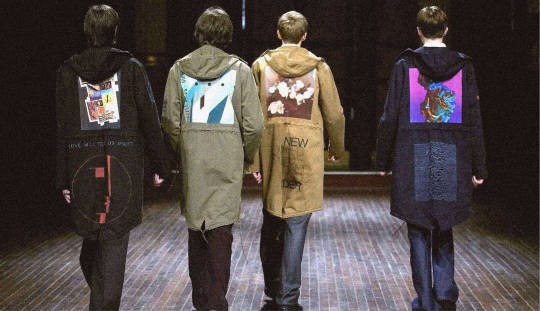
These two examples of designers actively influenced by this culture are just a fraction. These designers were punks or goths themselves. People influenced by the postmodern identity of the time and post-Soviet tradition. Post-Punk fashion embodies the music of the time it emerged and aligns with deeper considerations. So, it didn't take long for the entire fashion world to embrace this style, partly because "Gothic" and "Punk" became more mainstream, and partly because its aesthetic components were easy to design due to their often penetrating monochromatic minimalism.
Not only goths or avant-garde designers like Ann Demeulemeester, Martin Margiela or Rick Owens, deeply connected to the style and subculture of that time, but also luxury designers like Prada, Balenciaga or Bottega Veneta are incorporating it.
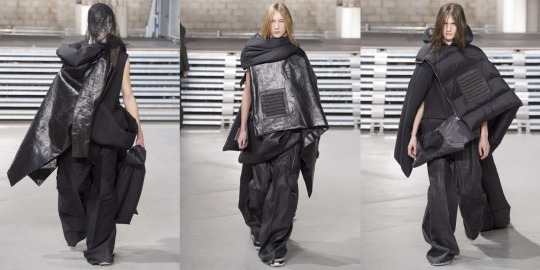
The look is romantic, dark, longing for death, partly edgy, partly overloaded. All aspects that exude a constant attraction from the clothing, as people are often drawn to "the other," sometimes even "the forbidden." The look can also be easily detached from the actual Post-Punk/Goth culture - something postmodernity excels at. The style of the Gothic culture can be perfectly broken down into its individual parts and used as a kind of aesthetic sandbox. Here a thick heavy chain, there's a choker, here big long earrings, add a pair of black high combat boots, a slim-fitted mesh shirt, and preferably paint the nails, and you're done. All things that houses like Prada, Marni, Bottega Veneta, for example, have done right.


What we see today in the Post-Punk-influenced style and what we interpret as avant-garde should actually be considered a modern tradition. Post-Punk fashion embodies the music and the spirit of the time it emerged and aligns with deeper existential discourses. The design language and atmosphere of that time are now used by traditional fashion houses to incorporate young designers into their ranks and increase their relevance, merely fulfilling their quota to be considered part of the traditional fashion pipeline of LV, Dior, Gucci, and Balenciaga. The avant-garde cannot be seen as so established. The rapid growth these companies have undergone to make billions and the inheritance method of finding a designer to take over the house are enough to profile themselves as industry magnates.

In a world where fashion constantly reinvents itself, the enduring legacy of post-punk culture persists as a modern tradition. From the raw, rebellious sounds of bands like Joy Division to the avant-garde designs of Ann Demeulemeester and Raf Simons, the essence of post-punk continues to captivate hearts and minds. As luxury fashion houses seamlessly incorporate this style, it's vital to recognize the roots and the countercultural spirit that birthed it.
The romantic, dark allure, the edgy overtones – they all beckon, inviting us to explore "the other," even the forbidden. Yet, amidst the mainstream adoption, a call echoes for authenticity. True avant-gardists, whether musicians or designers, carve their paths, declaring, "This is our thing." The new avant-garde emerges not just from runways but from the pulsating hearts of those deeply rooted in their subcultures.
In a world dominated by industry magnates, the journey of post-punk fashion from the underground to luxury houses is a testament to its enduring power. As we witness the evolution, let us celebrate the genuine, the authentic, and the countercultural voices shaping the new avant-garde.
So, whether draped in asymmetrical cuts or sporting a rebellious attitude, the message is clear: The post-punk spirit lives on, and the next wave of avant-garde creators is ready to make their mark, confidently declaring, "This is our thing."
Davis Jahn
#post punk#gothic#fashion#ann demeulemeester#prada#balenciaga#punk rock#punk#writing#philosophy#art#avant garde#avant garde fashion#raf simons
72 notes
·
View notes